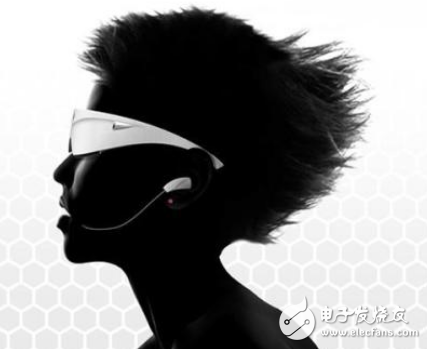According to reports, Simon Wheatcroft, a 35-year-old blind athlete in the United States, is expected to be the first blind runner to complete the marathon without any assistance, thanks to the prototype of the wearable navigation device of the startup WearWorks. According to statistics, 1.5 billion people worldwide lose their vision or vision loss. Most of the visually impaired people do not work and face different levels of mobility and navigational barriers.

Using WheatWorks technology, Wheatcroft not only enhances the heart map of the surrounding roads, but even directs people who are over-reliant on smartphones. Wheatcroft completed important events such as the 2016 Boston Marathon, the New York Marathon, etc., but during these races, Wheatcroft relied on the guide to run together, and now he is seeking technical assistance. Wheatcroft used the corrective navigation technology developed by IBM engineers in the African Namibian Desert Marathon in May 2016. The device uses a series of audio clue navigation to guide the runner and maintain it within the programmed range. The device is named eAscot. Wheatcroft said that eAscot can be used as a proof of concept for correcting navigation, but there are still too many restrictions on the overall function. For example, the device assumes that there are no obstacles in the desert, so that he hit an unmarked player in the next day without a navigator. Flagpole. Wheatcroft believes that for the visually impaired, there is no breakthrough navigation technology that is truly affordable or difficult to achieve. While the Google Glass and Aira subscription services allow blind people to get information from the field of vision, the Aira subscription service costs $329 a month and now has fewer than 1,000 users.
Microsoft's Seeing Eye uses mobile phone lenses and visual recognition software to navigate certain scenes, but with limited navigational cues and the need for continuous power and Wi-Fi connectivity, there are many limitations. This is why guide dogs and canes still have their necessary reasons. Most of the technology that Wheatcroft has used so far relies on audio prompts, but audio is still not enough for communication, so Wheatcroft is increasingly looking at the touch, thinking that haptic technology can control people with impaired vision without overloading the senses. He believes that haptic devices can be woken up by voice commands to use GPS navigation and then guided by tapping on the skin. The system can be combined with other sensor systems, supplemented by guide dogs or canes to avoid obstacles, step changes, and sudden limits.
Wheatcroft found WearWorks, a haptic solution company, to develop a wearable haptic device, Wayband. The user pairs the Wayband with the phone and uses GPS to draw the route. Once the user steps into the wrong direction, or approaches the obstacles drawn, the Wayband will sound like a mousse password, for example, the left turn signal is 4 taps. Turn right is 2 long slaps. But although Wayband can bring a blind person to the post office, it can't help them avoid squatting or crossing the road. To this end, Wheatcroft will work with the Wayband team to create ultrasound equipment to help with micro-navigation. This device is called "Turtle" and is a 2 square inch green plastic device that is attached to the front of Wheatcroft to play and receive ultrasonic vibrations. When the reflected wave detects that another runner or object is approaching, the constant low level vibration of the device accelerates the operation.
In addition to wearing turtles, Wheatcroft also wore a version of the armor-sized device in the New York Marathon. After the game, the WearWorks project began selling early versions of Wayband, including the athlete's armband version, starting at $300. However, during the test of the New York Marathon, the turtle's function was stopped due to rain. Wayband also received less signals. The research team thought that the data volume was too large and the traffic along the track was insufficient. WearWorks' next step is to improve software algorithms to differentiate data differences, enhance hardware tolerance and GPS systems. WearWorks believes that GPS chips used in smartphones in 2018 are expected to increase navigation accuracy to approximately 1 foot, significantly improving system performance. .
Plastic Tube Pressure Gauge,Plastic Pressure Gauge,Plastic Tube Manometer,Plastic Pipe Pressure Gauge
ZHOUSHAN JIAERLING METER CO.,LTD , https://www.zsjrlmeter.com